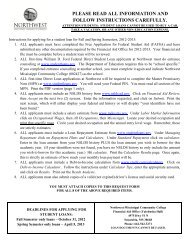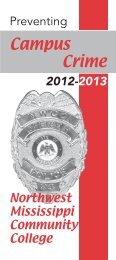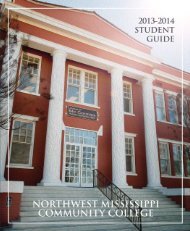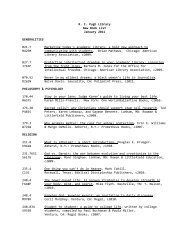Coping with Seven Disruptive Personality Types in the Classroom
Coping with Seven Disruptive Personality Types in the Classroom
Coping with Seven Disruptive Personality Types in the Classroom
Create successful ePaper yourself
Turn your PDF publications into a flip-book with our unique Google optimized e-Paper software.
Appendix A: Additional Issues and ConcernsExtend<strong>in</strong>g special consideration to nontraditional students <strong>with</strong> jobs, families,and m<strong>in</strong>imal support for attend<strong>in</strong>g collegeAs college <strong>in</strong>structors, we want to apply <strong>the</strong> same expectations to every student, butoccasionally exceptions are necessary. Nontraditional students sometimes require specialprovisions <strong>in</strong> college, whe<strong>the</strong>r <strong>the</strong>se are people for whom English is a second language orwho may be struggl<strong>in</strong>g to try and enter <strong>the</strong> ma<strong>in</strong>stream <strong>with</strong><strong>in</strong> <strong>the</strong> academy and <strong>with</strong><strong>in</strong>society.Many schools offer a full array of special services to assist students <strong>with</strong> particular areas ofdifficulty, such as ESL services, counsel<strong>in</strong>g opportunities of various k<strong>in</strong>ds, and tutor<strong>in</strong>g.Students should be directed to <strong>the</strong>se when applicable and expected to avail <strong>the</strong>mselves of<strong>the</strong>se support services as needed.Certa<strong>in</strong>ly, <strong>in</strong>structors and faculty members should cont<strong>in</strong>ue to try to identify students whoare scared, lonely, or desperate <strong>in</strong> some ways. It is important to look for those students whomay be just on <strong>the</strong> verge of dropp<strong>in</strong>g out and reach out to <strong>the</strong>m <strong>in</strong> whatever helpful ways arepossible.Instructors cannot do everyth<strong>in</strong>g, however. When students <strong>in</strong> classes have psychologicalstruggles, faculty members are limited <strong>in</strong> <strong>the</strong> help <strong>the</strong>y can provide. This is where referralsfor counsel<strong>in</strong>g come <strong>in</strong>to play. Instructors do not have to delve <strong>in</strong>to issues that are beyond<strong>the</strong>ir purview and expertise. This would be <strong>in</strong>appropriate.What <strong>in</strong>structors can do is meet <strong>with</strong> <strong>the</strong> students <strong>in</strong>dividually to try to identify what it isthat <strong>the</strong>y need help <strong>with</strong> <strong>in</strong> <strong>the</strong>ir course, and to determ<strong>in</strong>e ways <strong>the</strong>y can be assistedacademically.At <strong>the</strong> same time, <strong>in</strong>structors should provide additional help by affirm<strong>in</strong>g <strong>the</strong> students’ <strong>in</strong>nerstrength—that is, by lett<strong>in</strong>g <strong>the</strong>se students know that you see <strong>the</strong>ir potential to grow and tolearn. Th<strong>in</strong>k optimistically <strong>with</strong> <strong>the</strong>se students about what <strong>the</strong> future may hold for <strong>the</strong>m if<strong>the</strong>y apply determ<strong>in</strong>ation and perseverance as <strong>the</strong>y proceed <strong>with</strong> <strong>the</strong>ir academic careers.35











![Pro-Dental Hygiene [Major Code T34] - Northwest Mississippi ...](https://img.yumpu.com/35524032/1/190x149/pro-dental-hygiene-major-code-t34-northwest-mississippi-.jpg?quality=85)




